John Hurrell – 23 April, 2011
The morphological landscape correlations of Gabori's painting (made through memory) are not that obvious, though the geological pigment colours are. The shapes have a lurching, tumbling feeling that implies a very casual placement of the coloured configurations and how they are overlaid or aligned. They seem almost random.
Auckland
Aboriginal Painting from Mornington & Bentinck Islands
The Heart of Everything
1 March - 30 April 2011
Australian Aboriginal art doesn’t get shown very often in this country. I think in Auckland the last selected presentation of Australian indigenous art in any municipal institution was part of Advance Australian Painting, the show put together by Andrew Bogle for Auckland Art Gallery in 1988. So currently right now in Newmarket, twenty-five paintings by thirteen artists from the Mornington and Bentinck Islands in Northern Queensland are on display (unusually) in a dealership, the new premises of the Tim Melville Gallery.
Varying in size (one, Dibirdibi Country, is four and half metres long but the rest are much smaller) they are presented in the two gallery spaces and large office. Stylistically the work ranges from the conventions of the Papunya or ‘dot-pattern’ painting that attracted a big international collecting market in the early eighties, to seemingly a variety of Abstract Expressionism (like say Still, Gorky or Mitchell) - but much rawer in its use of thick brushmarks: more similar now to German (eg. Baselitz) than North American AbEx paint application.
I am impressed by the imposing physicality of the large colourful works by Sally Gabori which apparently reference the landforms of her home environment. The morphological landscape correlations (made through memory) are not that obvious, though the geological pigment colours are. Her images are not compositionally as structured as fifties American work which was of course preoccupied with visual tensions and the picture plane, but seem much looser and wonkier. The shapes have a lurching, tumbling feeling that implies a very casual placement of the coloured configurations and how they are overlaid or aligned. There is no sense of inevitability; they seem almost random.
Other artists here though are much tighter in their approach to design placement and overall composition - more intricate in their organisation of brushmarks which are a lot finer. Reggie Robertson’s Lightning Headband 2009 is a complex pointillist web, a repeated diamond-shaped module that plays tricks with your analytical perceptual skills by merging into a grid of horizontal squares as well. The two types of matrix are somehow overlapped and blended.
Annika Roughsey’s two vertically rectangular Thuwathu Scales works of undulating rows of swelling, pulsing lines of short strokes are also tight, creating fascinating tensions where the pale pigment loses its opacity and becomes fainter over the next twenty to thirty lines - as the artist moves from left to right. Only to be recharged when dipped into paint once more. As if within a form of finely woven basket, the regular optical boosts of brighter tone add shimmering flickering slivers that fire up the twitching red and grey field.
Another artist, Joyanne Williams, specialises in fields of unlined, wobbly clusters of dots of just thinly applied grey paint. Her sensitive daubings in Barramundi Scales reveal different shapes of brush tip, and again, different densities of pigment intensity. The limitation in chroma adds focus to her work and makes you look closely at the variations.
A lot of the work here I am indifferent to, but as is obvious, certain artists (those I’ve mentioned) invariably ‘connect’ and engage through their handling of materials. I won’t say ‘conceptually’ because I’m not confident I fully understand the coding behind the rendered marks or shapes. Perhaps the Barramundi or Thuwathu for example are ancestral fish whose scales are consciously referenced, but that doesn’t tell us much.
It is good for this city to have these works from over the ditch available to look at and think about. Makes the usually insatiably curious Auckland gallery hoppers lives a lot richer if they care to make a visit - especially if they are not familiar with these genres already.
John Hurrell
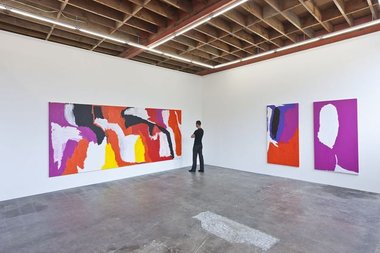
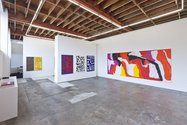
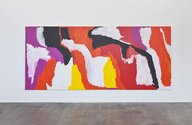

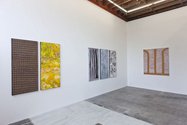


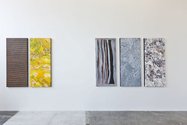
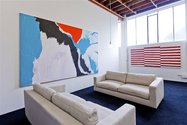
 Advertising in this column
Advertising in this column Two Rooms presents a program of residencies and projects
Two Rooms presents a program of residencies and projects



This Discussion has 0 comments.
Comment
Participate
Register to Participate.
Sign in
Sign in to an existing account.